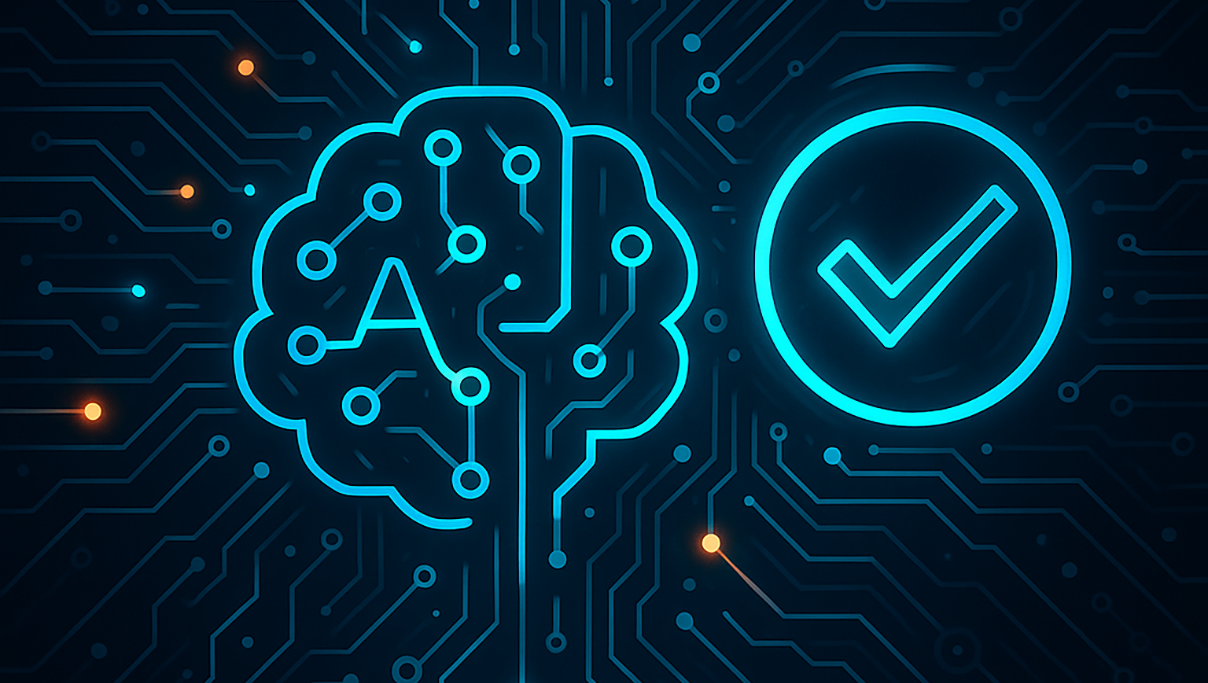
How to Choose the Right Agentic Framework for Your Enterprise
In the dynamic world of software development and digital product creation, AI has transcended simple, one-off applications. We’re now in the age of agentic frameworks – services and libraries that enable the creation of AI applications with the abilities to act autonomously, reason, and accomplish complex, multi-step goals.
Unlike traditional AI applications that merely respond to prompts, these frameworks empower AI agents to break down problems, interact with external tools and environments, and adapt their strategies to achieve a desired outcome. This capability significantly expands the scope of problems that AI can solve, making it a critical consideration for technical and engineering leaders looking to innovate.
We understand that choosing the right framework is not a one-size-fits-all decision. It’s a strategic choice that can determine the success of an AI initiative, its scalability, and its security posture. To help you make an informed decision, we’ve outlined four key questions to consider when selecting an agentic framework.
These questions serve as a compass for navigating the diverse landscape of available frameworks, from fully programmable platforms to user-friendly, no-code solutions. They provide high-level direction, but a final decision requires a deeper, head-to-head evaluation of frameworks based on criteria such as 3rd-party integrations, deployment mechanisms, and specific capabilities.
1. Logic and use cases: How complex is your problem?
The first and most critical question to ask yourself is about the nature of the logic required for your agentic workflow. This boils down to a fundamental distinction: are you dealing with simple workflow automation or a complex, proprietary business challenge?
For tasks that involve straightforward, everyday workflow automation, a workflow framework with a low-/no-code user interface may be the ideal choice. These frameworks are designed to complete sequences of easier tasks and are often built for user assistance or flow automation. Examples include Zapier, Dify, and n8n. They offer a trade-off: ease of use and a shallow learning curve in exchange for limited customizability.
On the other hand, if your agents need to tackle a challenging problem with complex logic specific to your application, you’ll need to select a deeply customizable, fully programmable framework. These frameworks offer the flexibility to create custom logic but come with a steeper learning curve and longer development times. They require strong programming and architectural knowledge to be fully utilized. (Note: some do offer a hybrid approach, providing a fully programmable core with additional low-/no-code environments.) Examples of these include LangGraph, CrewAI or Microsoft AutoGen.
The choice here directly impacts development time and the level of technical expertise required. A simple automation task can be quickly set up with a low-code tool, whereas a complex, research-oriented agent requires a more robust, programmable framework and a skilled development team.
2. Runtime and complexity: Is it a sprint or a marathon?
The expected intensity and frequency of your application runs are crucial factors in framework selection. A quick helper tool that runs frequently and for short periods has very different requirements than a long-running, intensive research process.
Some frameworks excel at handling intensive and complicated tasks. These frameworks often support agentic teamwork processes and can dynamically complete complex tasks. Examples include CrewAI and Microsoft AutoGen.
For quick agentic task solutions, frameworks like n8n, Dify, and Zapier are ideal. These are better suited for pre-defined workflows that execute short tasks.
Other distinctions, which have a significant impact on cost related to AI consumption, are the frequency of the runs and how the framework is deployed. Some platforms use a “pay-per-invoke” model, which can become prohibitively expensive for applications that are invoked frequently. For example, the enterprise platforms of CrewAI and the cloud-hosted version of n8n operate on this model. In contrast, platforms with a “stable fee” model, like Zapier and Dify (Enterprise), might be more cost-effective for frequent, short-run applications.
It’s worth noting the availability of fully open-source frameworks and some that, while not open-source, can at least be self-deployed. This gives you full control over the runtime environment and costs, but it requires the internal expertise to deploy and manage the solution. Popular open-source frameworks include CrewAI (non-Enterprise), AutoGen, LangGraph, Dify (non-Enterprise), LlamaIndex, and n8n (self-hosted).
3. User description: Who’s building the agents?
The technical expertise of the team creating the agent is a critical consideration. Do you have a team of AI-knowledgeable engineers, or do you need a low-/no-code environment?
Code-based frameworks require developers with expertise in AI and programming to construct them. These frameworks, which are often better suited for complex tasks and custom logic, include LangGraph, LlamaIndex, Microsoft AutoGen, and CrewAI. If you lack this in-house expertise, firms like 3Pillar can provide a team of engineers knowledgeable in these frameworks and deployment tactics.
For non-engineer users who need to automate tasks using agent flows, frameworks with low-/no-code environments and built-in deployment options are more suitable. These platforms empower a broader range of users to create their own solutions without writing a single line of code. Examples include n8n, Dify, and Zapier.
A newly emerging area in this space is low-/no-code platforms built to use more complex frameworks, such as the Enterprise platform for CrewAI or LangGraph Studio. These platforms are a middle ground where architectural and programming logic comes into play, but have a less steep learning curve.
The decision on who is creating the agent directly impacts the scalability of your innovation efforts. By selecting a framework that aligns with your team’s skill set, you can either empower a small group of specialists to build complex systems or enable a wider audience to create simple, effective automations.
4. Data security: Is your data safe?
Data security is paramount, especially when integrating an agentic workflow that handles sensitive information. You must consider the specific security requirements of your application, including compliance standards like SOC and HIPAA.
The security of an agentic workflow can be categorized into three main areas:
- Frameworks with built-in security (e.g. n8n, Dify)
- Frameworks that allow security options to be added (e.g. CrewAI, AutoGen)
- Frameworks that require security to be built on top (e.g. LangGraph)
The first category includes predominantly SaaS-style frameworks that require security options to be in place to be competitive in the enterprise market, such as n8n or Dify. The more technical, programmable frameworks are divided between the latter two categories based on ease of security integration. Frameworks like Microsoft AutoGen have pre-made integrations with services like Microsoft Entra to address security, while others such as LangGraph require security mechanisms to be added on top of the application code.
When data is passed into frameworks that are not self-deployed, great care is needed. Most reputable enterprise frameworks comply with major standards like SOC and HIPAA and have data security guarantees in their agreements. SaaS frameworks that comply with such standards include Zapier, Dify, n8n, and CrewAI (Enterprise).
Note that many of these frameworks provide self-deployment options, including n8n, LangGraph, CrewAI, AutoGen, Dify, and LlamaIndex, giving you full control over your data management. This is particularly important for SaaS full-platform frameworks where data must be uploaded into a third-party system.
For open-source frameworks, the security largely depends on the models used, which are outside the scope of the frameworks themselves and should be secured at the provider level.
Choosing a self-hosted, open-source framework can mitigate security risks by ensuring your data never leaves your environment. In contrast, leveraging a compliant SaaS framework can simplify deployment and management, provided you trust the vendor’s security posture.
A strategic choice for enterprise innovation
The decision of which agentic framework to adopt is a strategic one, touching on logic, use cases, technical expertise, and data security. It’s not about finding the “best” framework, but the right framework for your specific business needs and organizational capabilities.
- For simple, quick automations: Start with low-/no-code agent workflow tools like Zapier or n8n.
- For complex, long-running research: A fully programmable framework like CrewAI or an open-source environment such as Dify will provide the necessary power and flexibility.
- For solutions that place emphasis on proprietary logic: Consider platforms like LangGraph or AutoGen that offer both programmability and a high level of customization.
By carefully answering these four questions, technical and engineering leaders can navigate the agentic framework landscape with clarity and confidence. 3Pillar is poised to assist you in this journey, helping you to not only select the right tools but also to implement and scale them effectively, ensuring your AI initiatives deliver real, tangible business impact.
About the author




